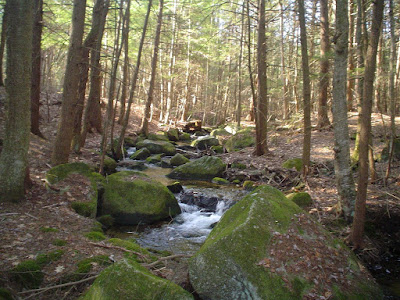"If people don't occasionally walk away from you shaking their heads, you're doing something wrong". - John Gierach
If you only fish tailwaters like the Swift and the Farmington you will not need this fly unless you are in a tailwater the day after it's stocked (trout will hit anything then). But if you fish freestones like the Millers, EB or the Ware YOU WILL NEED THIS FLY from mid-May onward because it represents one of the biggest meal tickets a good old freestone brown will encounter and that is the large nymph of the dragon and damsel fly species.
Most of our encounters with this critter are kind of "after the fact", the dried out husks of dragon and damsel flies are all over the boulders that line the river or on boulders that protrude from the river surface.
Why freestones? It appears that dragons and damsels prefer the warmer and less sterile environment that you find on a natural trout stream (so do most aquatic insects but that's another story. The next time you are on a freestone in June check the rocks to see what I'm talking about or check out the photo on the right. There you have the adult fly, which trout don't see to care about, and a couple of husks left on the rocks
I's amazing how that big 2 inch adult can squeeze out of that small shell!!
Trout chase the nymphs and if you are lucky around the beginning of June (on a hot, clear morning) you can see this game in action. The Bliss Pool on the EB ranks #1. Just walk out towards the opposite bank and you may just see the trout slashing away right at the shoreline. I can say that the EB has the most of these insects with the Millers coming in second. I've actually seen a Millers brown beach itself chasing these nymphs on the island at the Kempfield Run.
What fly to use? We are imitating the nymph and not the adult. The adult in the upper photo is a wonderful light green but we want to use a drab brownish wooly bugger in around a size 12. Cast it out and let it sink for a few seconds and then strip quickly in short bursts.
Here's another fly to use and I think it works better than the old WB.
It's at the top of the page and it's the Millers Bug:
Hook - nymph hook size 14 or 14
A little wire at the thorax to weight the fly (not too much)
Tail - Partridge fibers stripped from the stem.
Body - Brown Senyo's Laser Dub (just the right amount of flash)
Hackle - Brownish/tan hen hackle palmered back to front
Head - a few turns of peacock
Yes, I know it looks like a Sparrow fly but I wasn't thinking of that fly when I first tied it (honest).
Tying Flies and Booking trips
I don't think any guide knows the Millers and the Ware like I do. Some may show you the popular spots but I can show you a lot more than that!! Book a trip!!!!!
Ken












